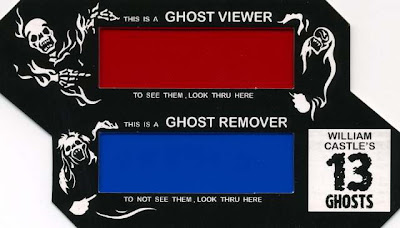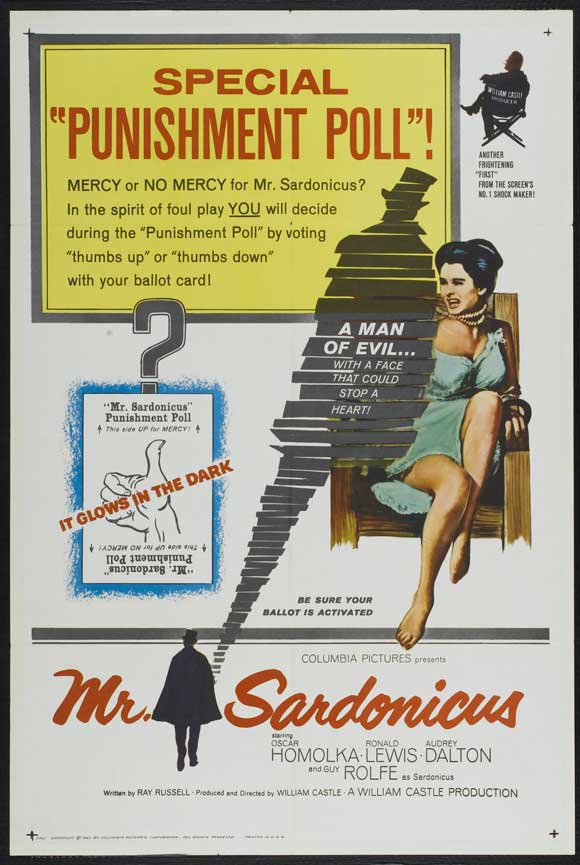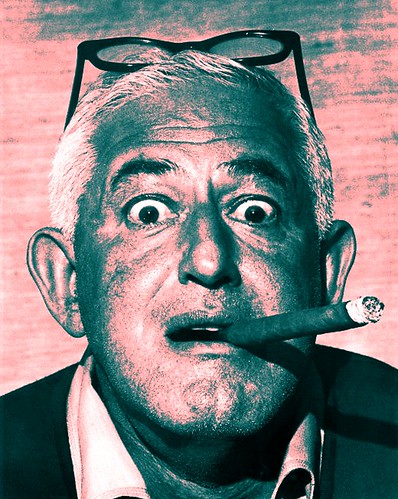Pants-wetting terror caused by creepy celluloid is great and all.
But horror movies shouldn’t just be scary; they should also be fun.
No one understood this better than William Castle, the 1950s and 60s horror movie producer/director that's been shamefully underappreciated by mainstream critics.
Overshadowed repeatedly by his contemporary, Alfred Hitchcock, Castle created a different kind of horror/suspense product – one that elicited less praise from critics than Hitch, but an equal amount of adoration from true horror fans.
Because William Castle’s movies have been mistakenly and accidently left out of the RDHP movie stable to date (and hopefully we can change this soon), here is an homage to the king of spooky schlock and his impressive library of endearing horror films.
Great Grabbing Gimmicks
Though he created such beloved horror films as “House on Haunted Hill” and “13 Ghosts,” Castle was never content enough with his films to let them stand on their own merit. In addition to that insecurity, newfangled TV was also sucking away theater audiences.
So, to GUARANTEE people would fill the theater for his movies, Castle accompanied each picture with a new exciting gimmick.
These tactics were less than subtle.
For his 1959 Vincent Price vehicle, “The Tingler,” Castle had theaters install electric shock devices in random theater seats. At a specific moment in the film where the actors are confronted by menacing body-inhabitant “the tingler,” theater management would throw a switch and send a mild electric shock into audience members, eliciting screams of terror.
This gimmick, named “Percepto,” and was just one of many “o” themed attractions Castle included in his films.
For perhaps his biggest hit, 1959’s “House on Haunted Hill,” the new, amazing film technique “Emergo” was employed.
When a skeleton rises from an acid vat in the film, a lighted plastic skeleton on a wire would appear in the actual theater from a black box next to the screen.
This “frightening” prop would then swoop over the heads of the audience, controlled by a lucky theater usher. The skeleton would be pulled back into the box as Vincent Price reels in the skeleton in the film.
According to IMDB, many theaters soon stopped using “Emergo” because when the local boys heard about it, they brought slingshots to the theater. When the skeleton started its journey, the rowdy boys would pull out their slingshots bombard it with stones, BBs, ball bearings and whatever else they could find.
For 1960’s “13 Ghosts,” the gimmick "Illusion-O" involved the audience receiving a pair of special glasses that were needed to “see the ghosts”. These ghost shaped "ghost viewers" contained a red filter and a blue filter.
Like many of his films, Castle himself filmed an introduction to 13 Ghosts where he explained the gimmick to audiences.
If you believed in ghosts, you would look through the red glasses, causing the ghosts to appear on the screen.
But if you didn’t believe in ghosts, or were too scared to actually see them, you would look through the blue filter, causing the ghosts to remain unseen.
Scream and a Smile
Castle was a marketing genius for including these gimmicks in his films. Even if they didn’t always work right or live up to their hype, the tricks elicited great word of mouth among the B-movie horror crowd.
How many movies do you hear from a recent viewer “we were sitting there, and then all of a sudden I got electrocuted at the film’s climax!” or “seriously, a fake-looking skeleton comes out of the screen at one point.” You’d probably want to check that out, wouldn’t you?!
But beyond all the gimmicks, Castle’s movies are great for more film-focused reasons. They don’t take themselves too seriously, and in turn invite the audience to just sit back and enjoy the entertainment value of the film.
If you get scared, okay, great. But that wasn’t the entire point of a Castle movie. He wanted to entertain you more than scare you, and succeeded time and time again with his schlocky, spirited B-horror flicks.
Time has been more than kind to Castle’s movies because of this. While his scares might not get modern day folks to jump, his humor, wit and snarky attitude still rings home.
How can you not root for a guy who appears before each one of his films, and goes to such promotional lengths to get an audience’s attention?
It doesn’t matter that the plots of some films were flimsy and outlandish (the tingler is an inherit body-monster that grows on and crushes one’s spine when they don’t scream in fright?)
Each Castle film is a party, not a funeral! Don’t sweat the details, just enjoy the ride. It is rare that Hollywood gives us such free-wheeling fun and abandon for convention, even in horror.
On shoe-string budgets, Castle managed to create films that are both creepy and captivating. You just feel good watching these films.
In the mood to smile while you scream? Pop in one of the great William Castle films listed below. Even if a skeleton doesn’t fly out of your screen, you will feel your own skeleton tingle with contentment.
Top Five William Castle Films
House on Haunted Hill (1959)
Millionaire Frederick Loren (Vincent Price) offers five people $10,000 to stay a night in a remote haunted house, giving each of them a loaded gun as a “party favor.” Throughout the night, they're terrorized by skeletons, disembodied heads and other grisly apparitions. Will any of the guests survive to win the prize? Or will the house scare them to death?
13 Ghosts (1960)
A bumbling family man on the brink of losing his house inherits his eccentric ghost-hunting uncle's mansion, and stumbles upon spirits that are only visible to guests who wear special goggles. While his family is thrilled at first to have a huge home of their own, the uncle’s captured Caspers soon revolt against their new keepers.
Mr. Sardonicus (1961)
A search for a winning lottery ticket in his dead father's grave causes Baron Sardonicus' face to freeze in a horrible grimace, until he forces a doctor to treat his affliction – with even more grotesque results! For this films gimmick, Castle let the audience vote on the evil Sardonicus’ fate at the end of the film --via the "Punishment Poll.”
The Tingler (1959)
Dr. Warren Chapin is a pathologist who regularly conducts autopsies on executed prisoners at the State prison. He has a theory that fear is the result of a creature that inhabits all of us, and this creature is only suppressed by our ability to scream when fear strikes us.
He gets a chance to test his theories when he meets Ollie and Martha Higgins, who own and operate a second-run movie theater. Martha is deaf and mute, and if she is unable to scream, extreme fear should make the creature, which Chapin has called the Tingler, come to life and grow. Using LSD to induce nightmares, he begins his experiment.
I Saw What You Did (1965)
Two prank-calling teenagers become the target for terror when they whisper “I saw what you did” to a psychopath who has just murdered his wife. Various antics bring one of the teen girls in contact with the killer, who stalks the girl in an attempt to silence her. Features a fabulously over-the-top performance by Joan Crawford as the killer’s amorous (and much older) neighbor.















No comments:
Post a Comment